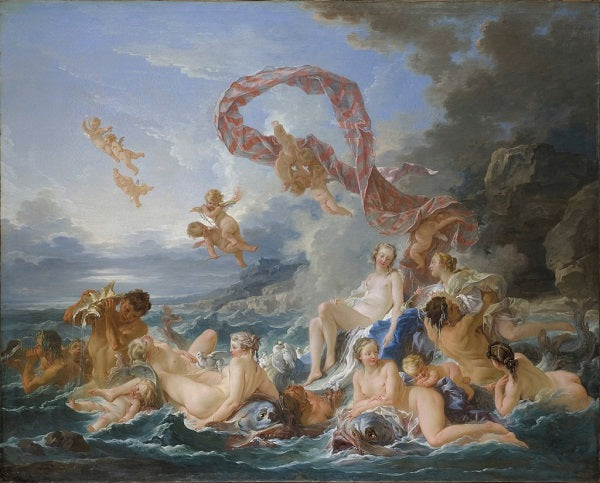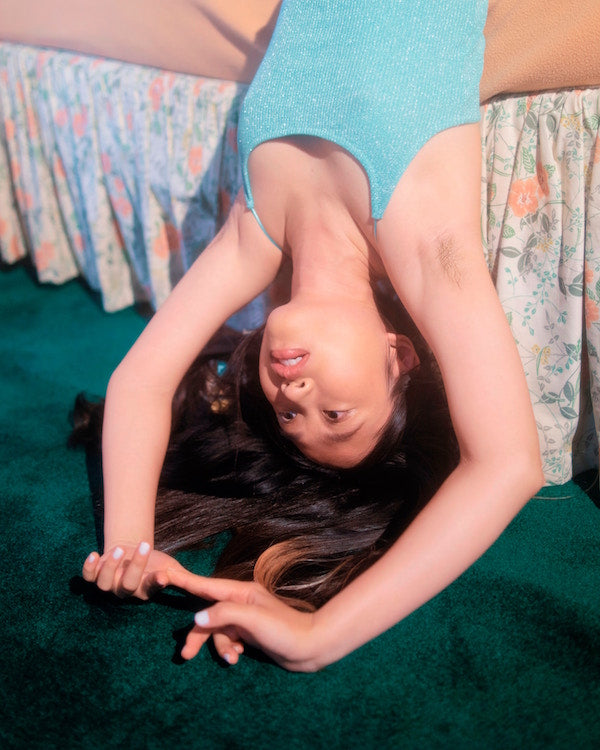
Is Squirting Just Peeing? And Does it Really Matter?
Squirting is a really weirdly contentious topic. Like the G-spot, its very existence is called into question, either by armchair scientists or actual researchers, trying to figure out exactly what it is, and how people do it.
We’re here to tell you that squirting is a real thing, it’s not gross or embarrassing, and many more people can do it than they think. Over 40% of people with vaginas have reported squirting, either regularly or within their lifetime, so it’s hardly a myth!
The Good
Squirting is a clear, external sign of pleasure. While mainstream porn tends to distort our understanding—seriously, they make it look like a firehose!—they’ve got the basics more or less correct. One of the best and most reliable ways to bring about a squirting orgasm is to stimulate the G-spot with the fingers or a toy, and the result is a little jet of mostly clear, slightly milky fluid. Squirting may or may not accompany orgasm, and the volume and strength of the ejaculation tend to vary per person. And speaking of porn, 'squirting' is one of the most-searched terms in the world, which goes to show that there's no shortage of interest in the phenomenon.
The ‘Bad and the Ugly’—Depending On How You Look At It
The squeamish may not like to hear this, but guess what? Squirt fluid probably does contain some urine. Yep, that’s right—while there is some disagreement between researchers, it’s become clear that the fluid expelled during squirting is part urine, and part secretion from the Skene’s glands, which surround the urethra and are thought to be adjacent to the G-spot. These glands, also known as the ‘female prostate’, are near the inner structure of the clitoris, so it’s possible they play a role in sexual arousal.
One French study demonstrated that in people who reported higher-volume squirting, a pelvic ultrasound showed the bladder was full before ejaculation and empty afterward. Although some secretions, probably from the Skene's glands, were detected in the fluid, this study suggested that squirting was essentially just peeing.
On the other hand, other studies of the chemical makeup of the fluid have shown that it’s not 100% urine at all, and that its composition changes throughout the menstrual cycle. Some of the same proteins are secreted from the prostate gland, strongly suggesting a sexual purpose. Either way, it’s difficult to prove one way or the other, since any sample collected is likely to contain some urine, owing in part to the proximity to the urethra.
We say two things can be true at once. While the French researchers found that the fluid most likely originated from the bladder, some people’s fluid samples contained an enzyme and other compounds thought to be produced by the Skene’s glands. And in all cases, the sample of people studied was very small. Given the diversity in our bodies and sexual experiences, not to mention the inconclusive results of these studies, isn’t it possible that squirting is more than one thing?
Because urine is considered one of the ‘bad’ bodily fluids, compared with saliva or semen, squirting tends to be controversial. Like period sex, people tend to come down hard on one side of the issue—either it’s gross, or it’s no big deal. Since there is no definitive study, we say that life is too short to avoid squirting out of embarrassment. If it doesn’t hurt you, your partner, or anybody else, who really cares? Even if it is pee, why should that take away from your pleasure?
Putting too much emphasis on what the fluid is and where it comes from is just another way to dissuade people, many of them identifying as female, from freely experiencing pleasure. We don't shame those with penises for ejaculating, do we? You'll experience way more pleasure if you learn to stop worrying and love to squirt.
So, How Exactly Does One Squirt?
If you have a vagina, it might be possible for you to squirt. We think the ability to squirt is part biology (the way your body was made) and part trial and error. While not everyone can do this, you never know until you try!
The one thing everyone can agree on: the G-spot is generally the key to a squirting orgasm, and lube is your friend. If you want, lay a towel or two down on your couch or bed, lie on your back, and relax. If you're still a little squeamish, this step can definitely help to keep your focus on your pleasure, and not on the cleanup.
It’s possible to squirt from self-stimulation, especially with a toy made to hit the G-spot. The stainless steel Pure Wand from Njoy is bar none one of the best G-spot toys in the world, with tons of reviews from those gushing—pun intended—about how amazing it is. The tempered glass Icicle No. 31 is also a fan fave, and a great place to start if you're looking to test out G-Spot stimulation.
If you like to feel vibrations, then we recommend the Pillow Talk Sassy—a generously curved G-Spot vibrator with a deep rumbly motor. Its smooth, rounded shape and bulbous tip will definitely help you to get there. Last but not least, the short but sweet little Gtouch has a curved tip for firm G-spot stimulation. Both these options are fully waterproof, which is a big bonus—squirting in the tub = easy cleanup!
If you have a partner, you might find it easier to let them stimulate you, either with the toy or with their fingers. Lying on their stomach in front of you, they have the freedom and dexterity to stimulate you internally at a good angle, while enjoying the view externally. To start, ask them to use a ‘come hither’ motion with their index finger, and if you need more firmness or fullness, slip another finger or a bigger toy inside. For more details on stimulating the G-spot read our intro article here.





